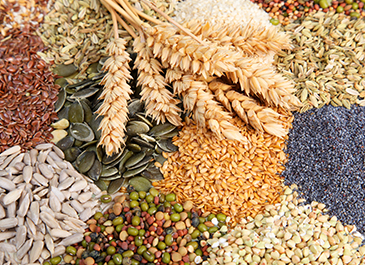Many of us have tried a gluten-free diet or at least sampled some of the thousands of new gluten-free products on the market in the last 5 years. But only 1% of the population actually has celiac disease, an autoimmune condition that requires strict gluten avoidance or risk serious intestinal damage. So why are the rest of us so intrigued by this diet fad? Likely, it’s because of the rumours that it can help with weight loss, relieve digestive upset and even improve skin health and mental concentration.
But simply swapping out your refined wheat-based foods for refined gluten-free foods, is not going to solve any of these issues. In fact, many gluten-free foods are highly processed. They can even contain ingredients like xanthan gum, rice flour and potato starch that aren’t currently a part of your diet and are NOT improving your health in the slightest. If you’re really looking for help with weight, skin and digestive health, consider a “grain-conscious” diet instead of a gluten-free one.
In North America, we love wheat. A lot of us rely on this one grain variety for all of our recommended 7 or 8 grain servings in the day, consuming flakes at breakfast, a sandwich at lunch and pasta for dinner. When you think about it, though, no one would eat 7 bananas in a day to meet all of their fruit and vegetable requirements. Why do we feel that balance and variety is any less important in the grain group?
The benefit of the gluten-free fad has been to elevate the status of so many other wonderful grains grown in this world: millet, amaranth, buckwheat, sorghum, quinoa, not to mention rice, corn and oats. But including these grains should not just be in the form of a gluten-free wrap, bread, pasta or cookie. They need to be consumed in their whole, intact state and in a varied and moderate way.
Grain-consciousness means considering if you had wheat at breakfast, then try different grains for lunch and dinner. If you had a processed or refined grain product like bread or noodles at lunch, strive for a whole, intact grain at dinner. Try ancient varietals of wheat like spelt, Einkorn and Khorasan (Kamut) and whole, gluten-containing, healthy grains like barley and rye, that are easier for many of us to digest.
But watch your portion! Nutrition research is emerging that shows we may be eating too many carbohydrates altoghter—not just from wheat. Increasing the percentage of your calories from healthy fats like avocadoes, nuts and seeds and ensuring half your plate is veggies, helps to keep carbohydrate portions small enough to improve blood sugar and hormone response in our body, which will ultimately impact your weight and your risk for diabetes and heart disease.
It’s summertime! Nicole is out and about, busy with her family during this sunny season. There are a lot of picnics and barbecues happening and Nicole is the first to toss together a whole grain salad for the occasion. As one of Choices’ Dietitians, Nicole is happy to recommend innovative ways for you to get your daily grains. You can reach her or any of Choices’ Nutrition Consultants at nutrition@choicesmarkets.com.
This article is meant for educational purposes only. The information here is NOT meant to replace consultation with a Registered Dietitian or other qualified healthcare professional.
If you want to read about Gluten-Free Diets, see our Thriving on the Gluten-Free Diet article to learn how to make a gluten-free lifestyle easier.

